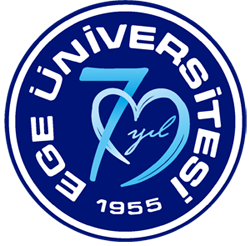Erasmus+ 2020 KA2- Strategic Partners Project
CONNECT4PLM "E-Learning Content Creation for Interdisciplinary Master Of Science Program in Product Lifecycle Management (PLM) Within European Communities" is a project that started in September 2020 and has a 30-month calendar. It is also granted by the European Union Erasmus+ Program.
CONNECT4PLM >>
Erasmus + Project
The project “RAPROMISE-Raising Awareness on Product Lifecycle Management via Education and Industrial Strategic Collaboration within Europe” was adopted on September 1, 2015 by the European Union Erasmus Plus Program. The project partners are CMS, VESTEL, Technical University of Vienna, University of Stuttgart, Kaiserslautern Technical University, the duration of the project is 30 months and the project budget is € 215,200.
Industry 4.0 - PLM
TÜBİTAK (The Scientific and Technological Research Council of Turkey)
2237-A granted under the Scientific Education Activities Support Program.
The Effects of Industry 4.0 and Product Life Cycle Management Systems on the Future of Engineering and Science Faculty Students, Traditional and Advanced Non-Destructive Testing Techniques (NDT) from the perspective of Industry 4.0.
The target group of the Industry 4.0 - PLM activity is the senior undergraduate students of the Faculty of Engineering and Science. The purpose of the event is to introduce new business models, innovations in technology and changing human resources management that Industry 4.0 transformation has brought to the business world, the effect of Product Lifecycle Management (PLM) systems in the transformation of Industry 4.0, digitalization, and the internet of things.
BAP (Scientific Research Project)
Product Development Process on a Product in PLM Platform
Project Abstract:
In this study, as a PLM application, the product has been chosen because of the fact that it is a product that contains many fields (design, analysis, plastic injection, electronics). Within the scope of the project, it is aimed to examine the methodologies to be applied in the design, analysis, production and supply chain which are the subdivisions of PLM and to apply them to the projected laptop case. With the design of the laptop case which will be realized by reverse engineering study in PLM Platform, the researchers will work in the scope of a product project of different disciplines, while on the one hand, the optimization of the design with engineering analysis is provided and on the other hand, with the optimization of a model on the product development process, the newly created system will be effective. it is expected.
BAP (Scientific Research Project)
Development of a Human Machine Interactive Haptic System in the Process of Virtual Product Development for PLM Applications
The project summary
The main purpose of this research is to reduce the time spent in the virtual product development process and to develop a new and innovative human-machine PLM haptic system to ensure that this product can be felt in the virtual environment by touching and to determine the initial activity on human participants. In the development of the integrated human-machine PLM haptic approach; many disciplines such as reversible engineering tools, sensor networks, human nervous system, signal processing techniques, statistical methods, psychophysical procedures and haptic technologies are utilized. The study is initially planned to apply on different sheets with different surface roughness and then to a cell phone case. First, the geometries for the products are removed by the scanning device. Then, in order to determine the mechanical properties of these products and to use them in the haptic approach, they are vibrated by the damper by placing accelerometers on their surfaces. Data received from accelerometers are subjected to pre-processing techniques and mode frequencies are subtracted. Then, in order to determine the material properties of the actual product (modulus of elasticity), modal simulations are performed on the virtual geometry of this product. In the case of virtual simulations, a small elasticity value is initially assigned and the solution is initialized. Once the experimentally measured first mode frequency is obtained by numerical simulation, the elastic modulus is renewed in the solution. Then, the mechanical coefficients obtained with the virtual product geometry are used in the haptic PLM approach and it is aimed to test the levels of people's perception of these products by their touches. We expect that this approach will reduce the time spent on the detection of PLM products and, in particular, the time spent in the modeling phase.
BAP (Scientific Research Project)
Development of services within a university: PLM application
The project summary
Due to global competition, the product development and production process is handled more and more and the life cycle costs of the product are taken into account.Therefore, especially in industrial occupational areas, industrial software and industrial automation platforms, product and product lifecycle are evaluated together, processes that are becoming more and more complex are kept under control. Processes from concept design to mass production can be optimized in terms of time, resources and product characteristics. In addition to the factories where only physical products are provided, the companies that have working environments and workflow arrangements also perform PLM applications within their bodies. In this study, PLM application will cover any section within Ege University Campus which includes many activities (student affairs, commission duties, laboratory, classroom conditions, landscaping etc.).











